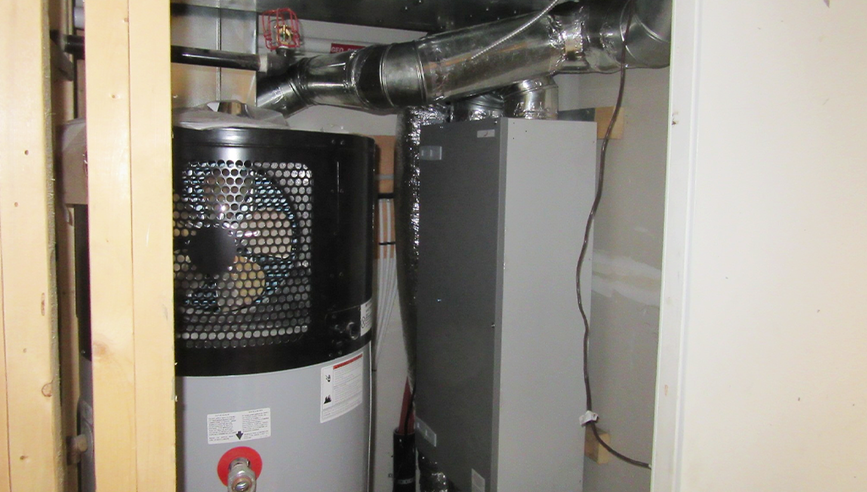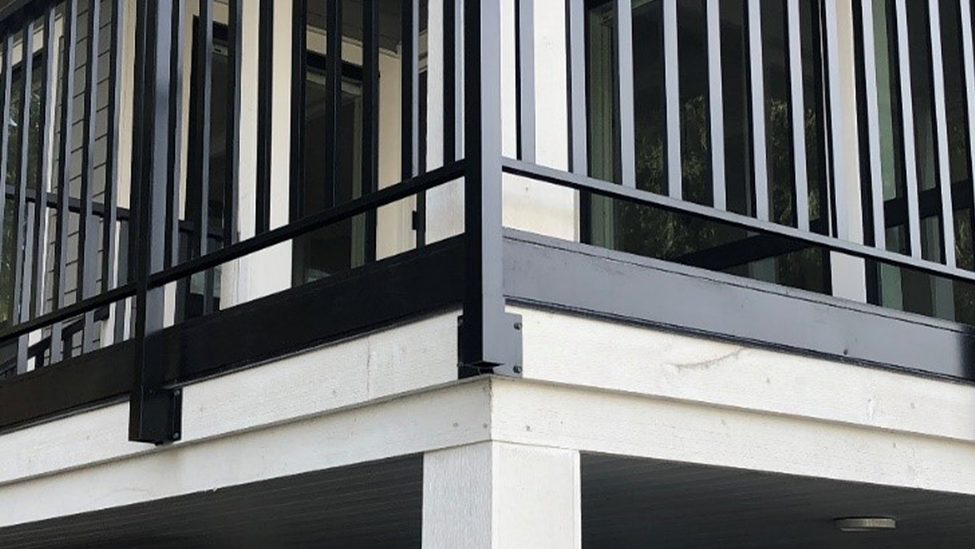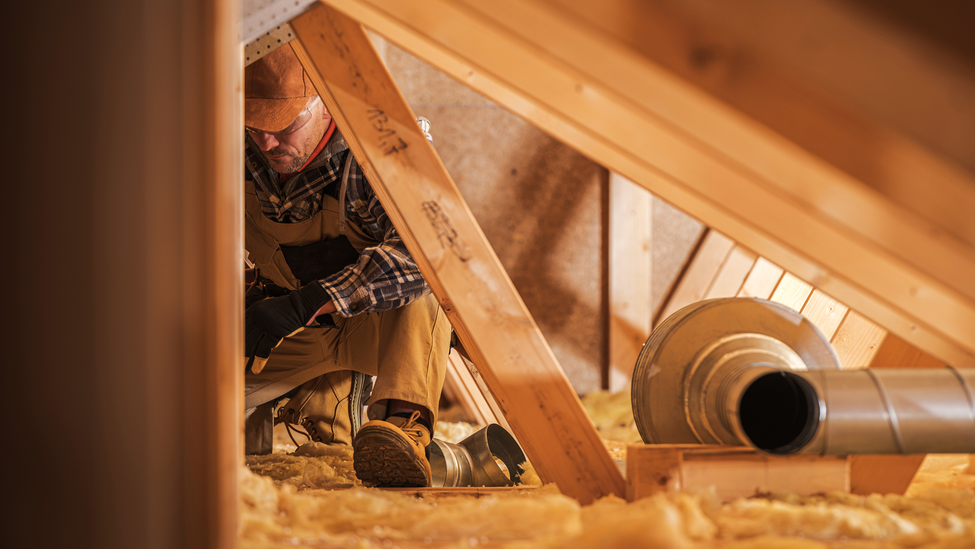Heat Recovery Ventilators and Energy Recovery Ventilators


Information for builders
Building codes throughout Canada have been requiring increasingly more energy efficient homes in recent years. As a result, there have been greater performance requirements pertaining to the airtightness of homes and improved ventilation systems.
Airtightness
Homes today are required to be increasingly more airtight. Older homes did not have the same level of airtightness requirements, which resulted in drafty walls that were essentially self-ventilating. The free movement of air, both from the interior to the exterior and vice versa, allowed moist interior air to exit through the walls while allowing some fresh air into the home. The solution to this energy inefficiency was to construct more insulated homes with a continuous air barrier. Because of the air barrier, air quality and moisture issues arose within the home which required ventilation to resolve.
Ventilation
Ventilation is the process of exchanging interior air with exterior air. To be effective it must supply, circulate, exhaust and treat air throughout the home. Air drawn from the exterior may have to be treated for human comfort, including filtering, humidification and dehumidification etc. The newly supplied air is circulated throughout the home, which is achieved by careful placement of supply diffusers. The air is then exhausted by venting through return air ducting or direct venting which is utilized in kitchens, bathrooms and laundry rooms. Occasionally, direct venting exhaust fans cause back drafting of fuel fired appliances such as furnaces, hot water heaters and wood burning appliances, as the exhaust pressures can become higher than intake air pressures, depressurizing the home. Special attention should be given when installing and using high output hood vents and bathroom exhaust fans.
HRV and ERV
Heat Recovery Ventilators (HRVs) and Energy Recovery Ventilators (ERVs) provide a solution to the challenges created by building and venting airtight houses with an energy efficient pressure balanced system. HRV’s and ERV’s are similar as both supply an intake of exterior air to the home and exhaust interior air from the home while recovering heat energy from the exhaust air, but ERV’s can also transfer moisture between the exhaust air and the intake air. The exhaust air heat energy transfer in both systems takes heat from the exhaust air in the winter and transfers some of it to the intake air, so the heating system has warmer air coming in, reducing the amount of energy required to heat the air coming into the home. The same principle applies in the summer, where colder exhaust air will cool the incoming air. ERV’s are generally used in climates where excessive dryness is a concern in the winter (dryer exterior air), and in climates where higher humidity is a concern in the summer (warm, humid exterior air). HRV’s are more commonly used in climates where high humidity is a concern in the winter (more humid exterior air). Maintaining proper interior humidity increases occupant comfort, reduces condensation and helps to maintain the integrity of building components. They can also assist in controlling attic rain where air barrier breaches exist between the attic and the home. Refer to the Travelers Technical Bulletins on Maintaining Proper Humidity and Attic Rain.
Design and specifications
There are numerous items that must be considered when selecting and installing an HRV or an ERV. One must keep in mind they are only one component of the heating and ventilation system, and the entire system and its demands must be considered:
- Is an HRV or an ERV more suitable?
- Determine appropriate system design. Is the HRV or ERV connected to forced air heating system or a stand- alone system? Both have advantages and disadvantages.
- Is the system best in a trunk and branch design, or a home-run design? Both have advantages and disadvantages when paired with either system.
- Determine occupant load and lifestyle.
- The mechanical system including the HRV or ERV must be sized accordingly.
- The ventilation capacity requirements must be code compliant.
- Do not install the HRV or ERV in unconditioned spaces.
- Size and location of ductwork should be designed to reduce sharp corners, and if the ductwork is to be in unconditioned space, it must be insulated to the same levels as the exterior walls.
- Be mindful that the unit is designed to run for up to 24 hours a day, so occupant noise tolerance should be considered when locating the unit.
- Choose a qualified Heating, Ventilation and Air Conditioning (HVAC) contractor to be part of your design team.
Cold weather limitations
HRVs: During cold conditions in the heating season, condensation can occur in the HRV’s heat exchanger core, which under typical conditions is collected in a pan and discharged into a drain. This condensate can freeze and block the exhaust air stream in extremely cold conditions. Some HRV’s are equipped with a defrost mode which closes the exterior supply airstream to allow the interior exhaust stream to defrost the frozen core. In persistently cold climates, pre-heaters are often used but they impact the efficiency of the unit and increase the energy costs significantly.
ERVs: Condensation does not typically occur in ERV’s since they recover moisture. In fact, some units are not equipped with discharge lines. However, ERV’s can occasionally generate condensate when the outside temperatures are extremely low, and the interior humidity is very high.
Frost protection is required in most of Canada, except Climate Zone 4 (BC’s Lower Mainland). Your HVAC contractor will be able to advise you which appliance is best suited for your area.
Commissioning/balancing
Prior to homeowner possession, the HRV or the ERV system must be commissioned. This entails a qualified HVAC contractor to balance the supply and exhaust airstreams. Keep the commission documentation.
Warranty
HRV’s and ERV’s are considered part of the distribution system and are covered by the new home warranty for two (2) years. In the event of a claim being filed with respect to HRV’s, ERV’s or the heating system, the documentation and commissioning will be helpful toward the successful resolution of the claim.
For a more comprehensive guide to HRV and ERV systems, refer to BC Housing’s Builder Insight 14 on Heat Recovery Ventilation.


